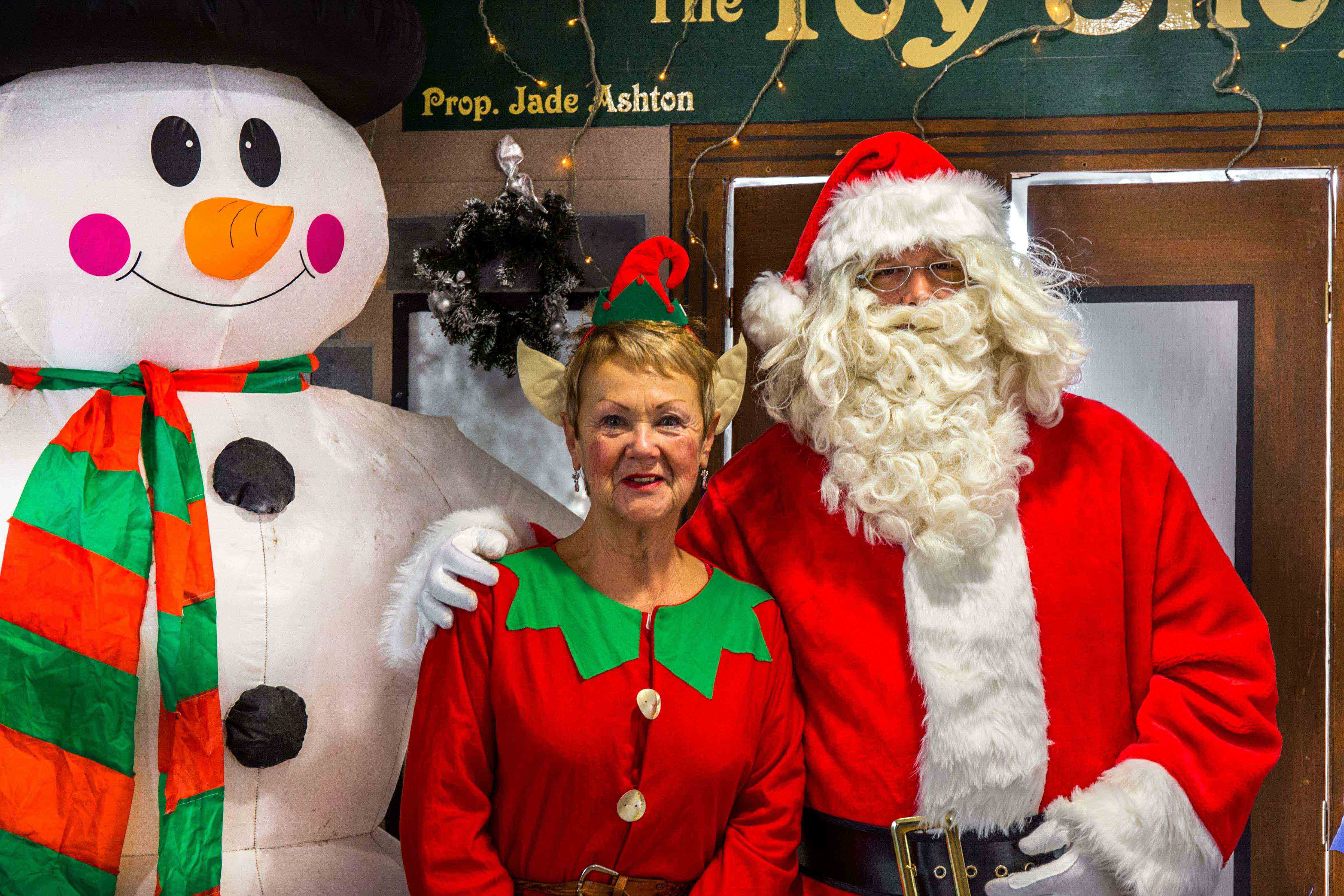A History of Association Specials – the first 15 years
The first RH&DRA Special Train was run on Saturday 15th June 1968, less than a year after the Association was formed.
Membership of the Association was still only in double figures, so it was a good effort to have 90 passengers book for what was then an unusual non-stop run from Hythe to Dungeness. Hauled by No.1 Green Goddess and driven by George Barlow, the train departed Hythe one minute late at 11.06 and took just 40½ minutes to cover 13.8 miles.
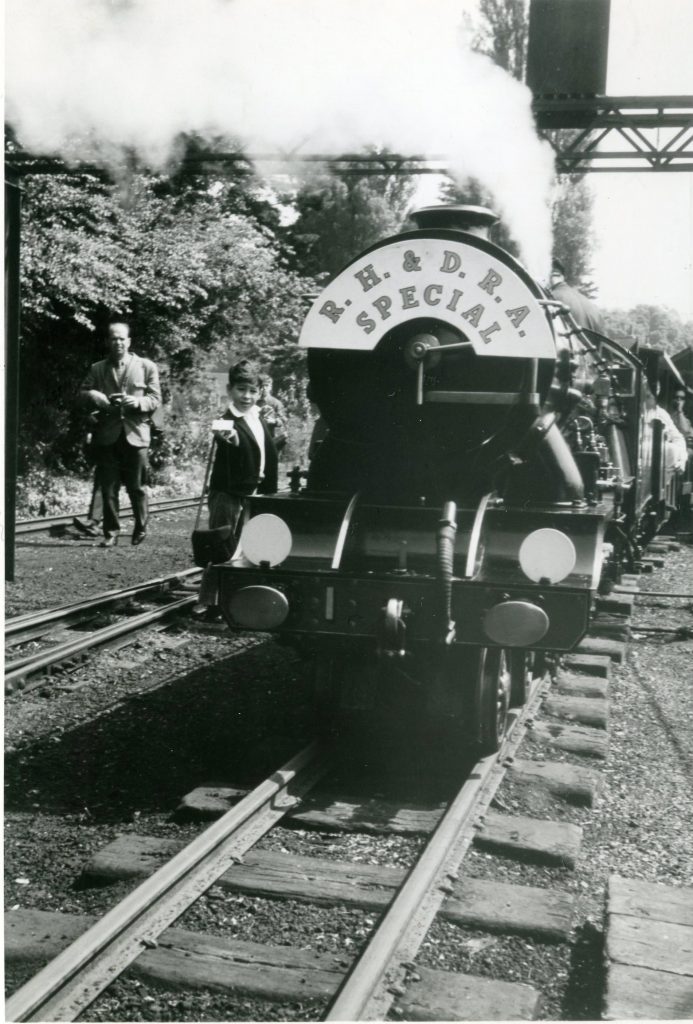
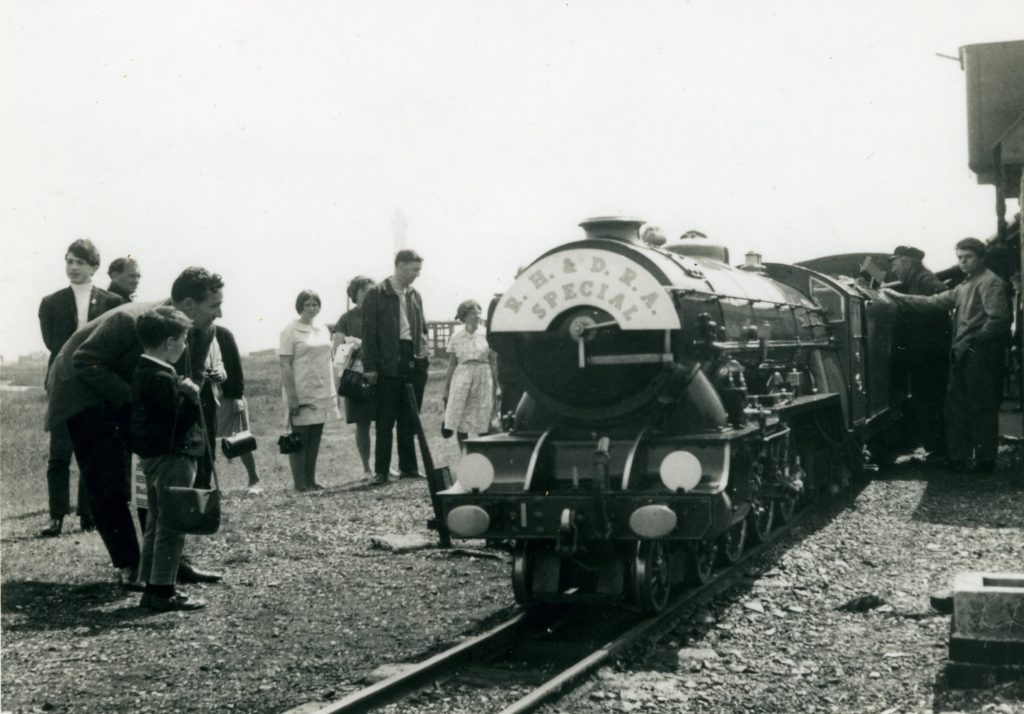
After lunch in the cafe at Dungeness, the train then ran non-stop to New Romney. (RH&DRA Magazine No.4)
The first train had been such a success that a second special was run on Sunday 22nd September 1968 – in partnership with the East Kent Model Railway Club. This time it would be a Hythe-to-Hythe non-stop run – the first time this had ever been done. As there was uncertainty about the ability of a single locomotive to manage this length of run without taking water, the train was double headed with No.1 Green Goddess (Driver George Barlow) and No.3 Southern Maid (Driver Terry Whawell).
The train was made up of 24 coaches with about 160 passengers and allowed 41 minutes for each part of the run. Leaving Hythe 3 minutes late at 12.13, it returned at 13.34 – a running time of 81 minutes. The locomotives had plenty of water left and could have managed another trip to Dungeness. However, the mechanical lubricators had almost run dry! (RH&DRA Magazine No.5)
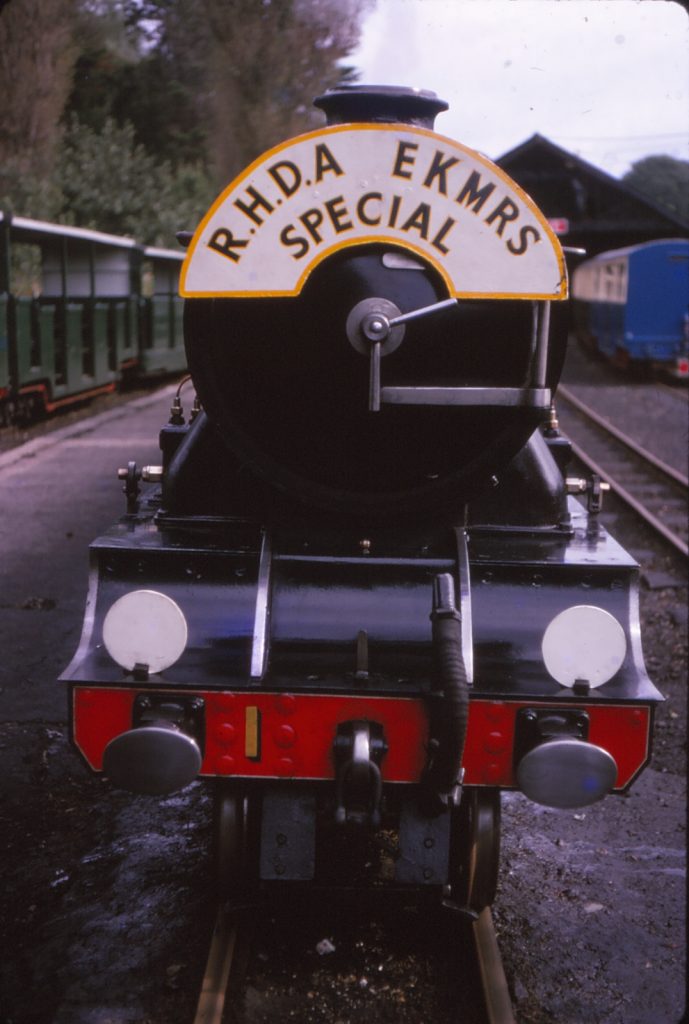
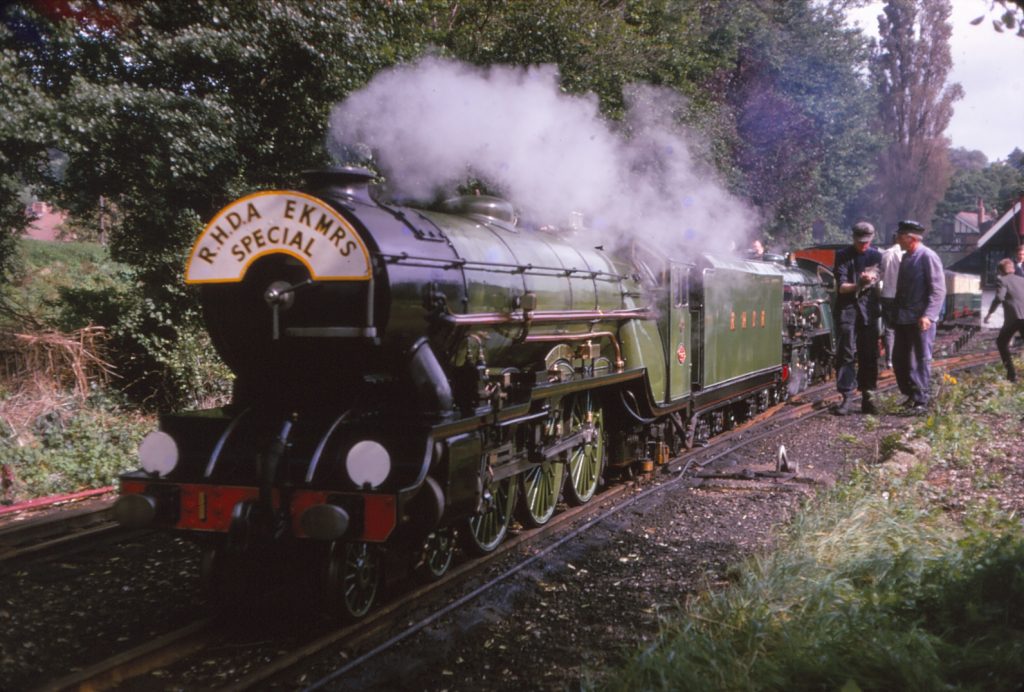
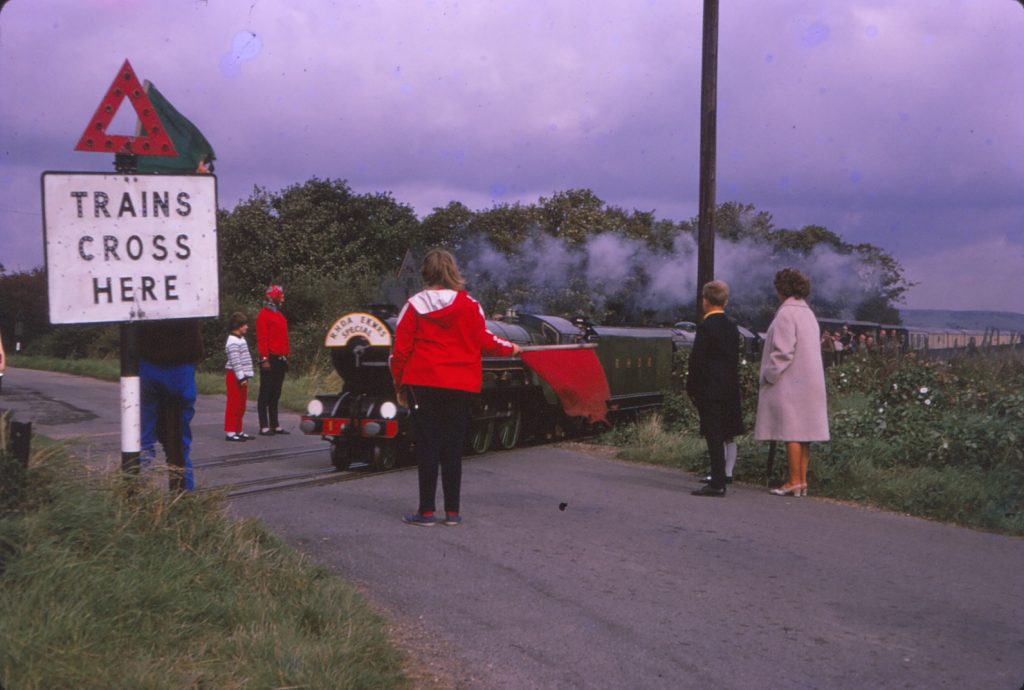
Sunday 21st September 1969 saw a similar non-stop Hythe to Hythe run, this time hauled by No.10 Doctor Syn and No.9 Winston Churchill. Despite a smaller train of 17 coaches and having all level crossings “flagged” (pre lights and barriers), this time the run took 83 minutes. With the demise of main line steam on British Rail the previous year, we were able to claim this as the longest non-stop steam run on any railway in the country!
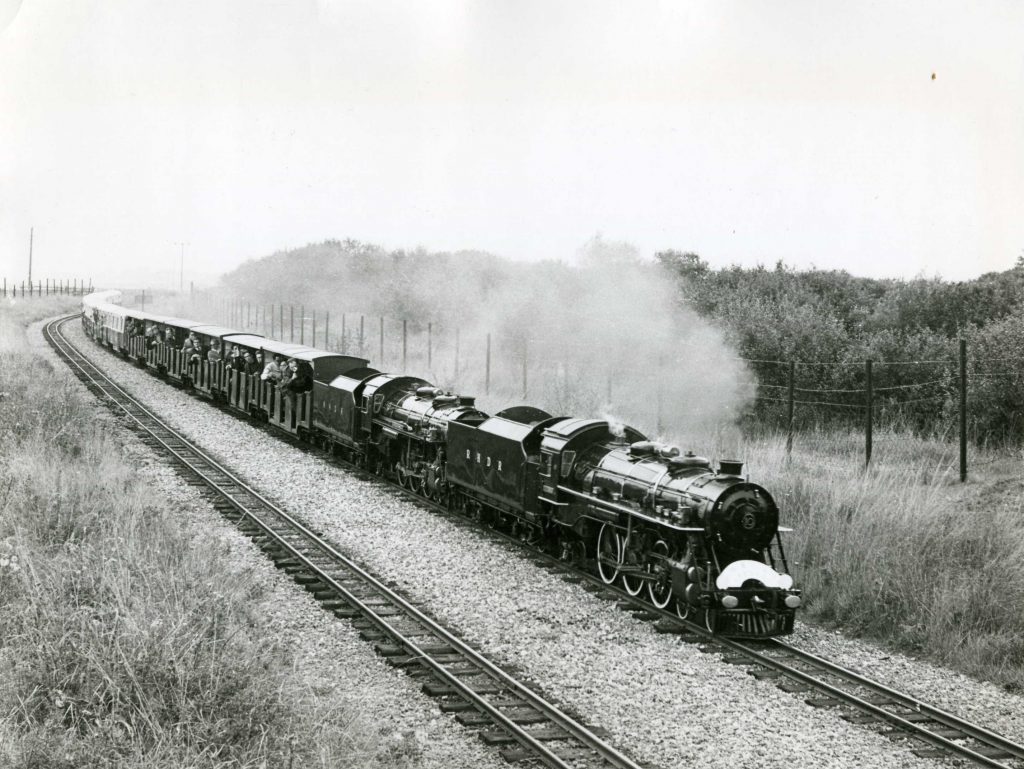
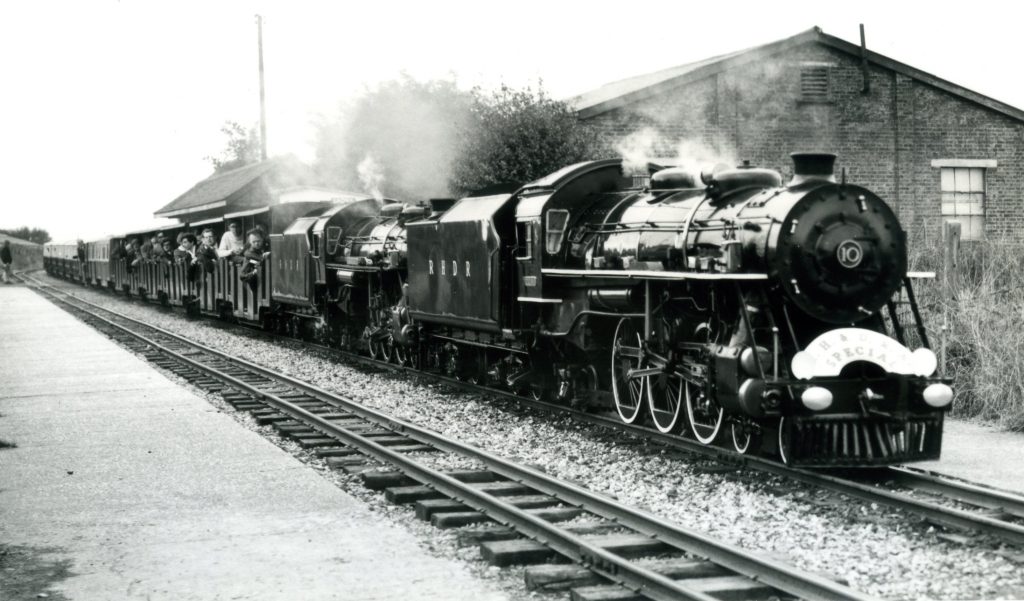
Nos.10 & 9 on the up line at St Mary’s Bay on the RHDRA non-stop special 22nd September 1969. Photo: Pat Ransome-Wallis
By 1970 the railway was confident enough to roster a single locomotive for a Hythe-to-Hythe non-stop run unless loadings were particularly heavy. Jim Fraser on No.10 observed all the speed restrictions but was still able to complete the trip in 75 minutes instead of the 82 scheduled. In those days tickets were sold to anyone interested, including some who turned up on the day, so although well loaded, there was some disappointment at the low numbers of members who booked.
In 1972, something different was tried with TWO special trains on the same day. This was done as part of that year’s Open Day on 10th September. One train ran from Hythe to New Romney non-stop via Dungeness while the other did the opposite journey. Fares were £1 for an adult or 65p for a child under 10. This included a single journey from New Romney to Hythe or vice-versa, depending on which special was to be used, admission to the Open Day as well as Model Land. Alternatively, you could travel on both specials for £1.50 (Child £1).
As well as these out of the ordinary workings, the Association also ran special trains between Hythe and New Romney and return for members attending the AGM.
The 1973 special was again a non-stop Hythe-to-Hythe journey. No.10 Doctor Syn was the booked locomotive, this time with her new regular driver, Peter Smith. “The Marshlander” name was resurrected, and a suitable headboard and flags adorned the engine. The journey was completed on time (of course) and on arrival the special was combined with a train jointly chartered by the Midland Railway Company and the Festiniog Railway Society. A well loaded 29 coach train headed by Doctor Syn and No.3 Southern Maid (Driver Richard Batten) ran non-stop to the Warren where a photographic run past was arranged before proceeding to New Romney.
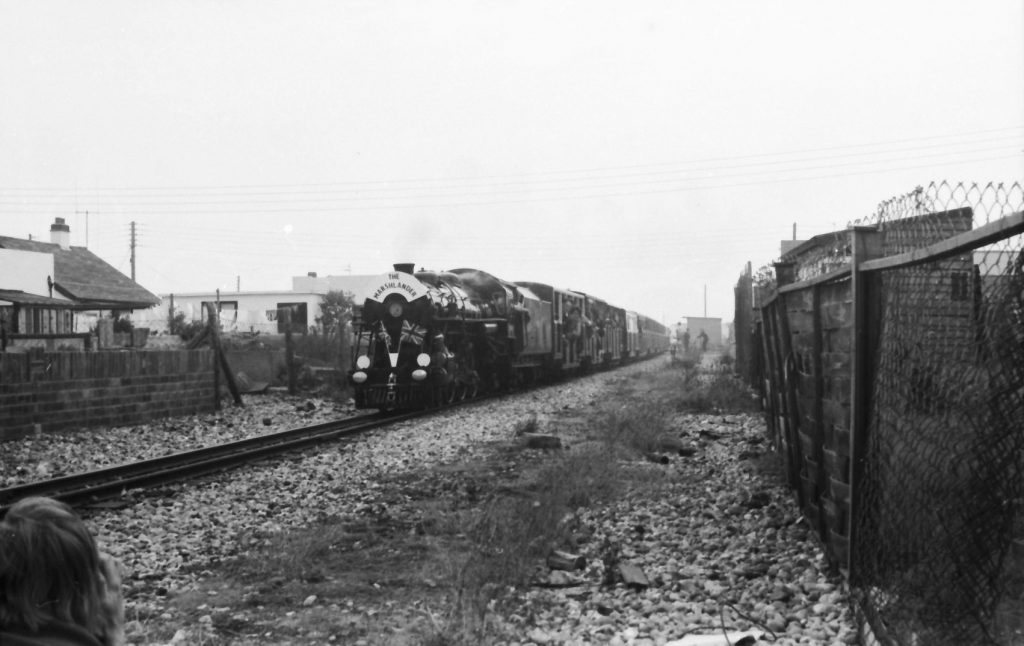
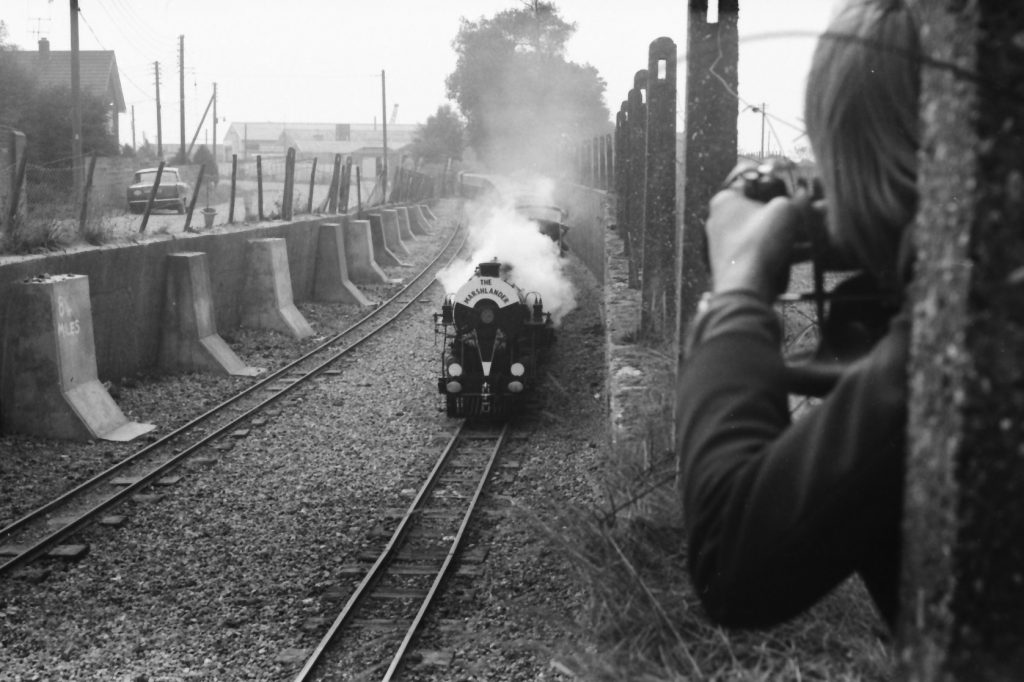
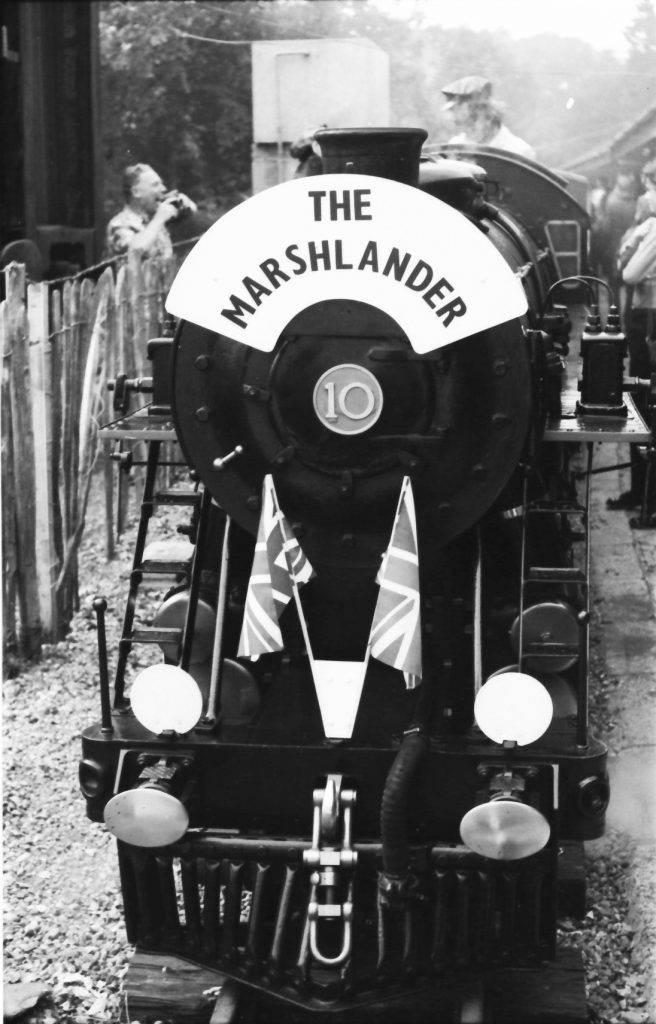
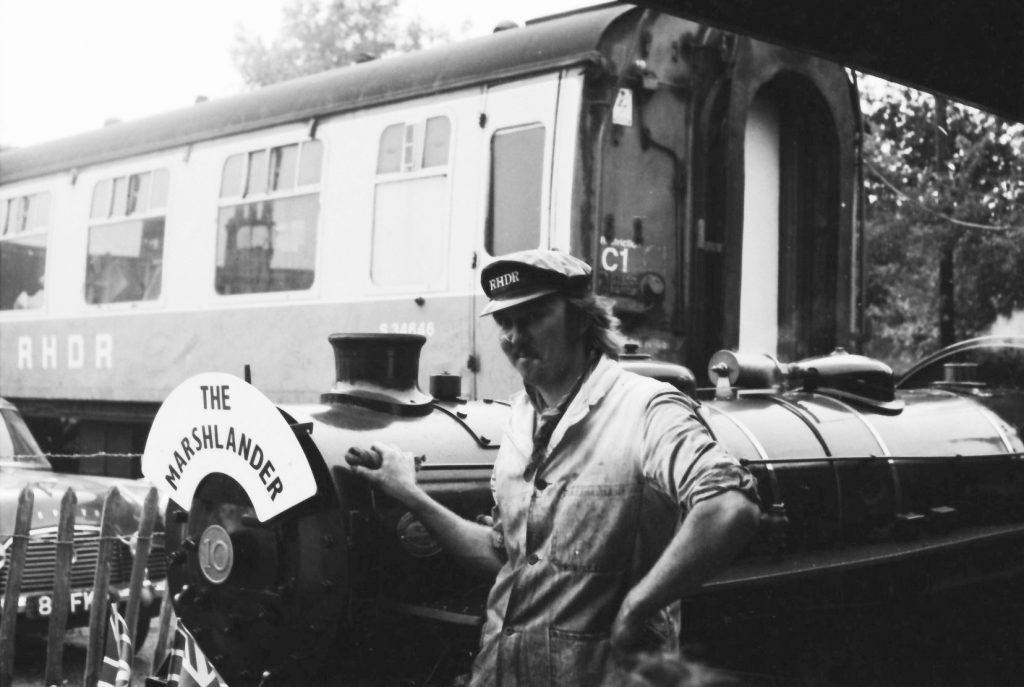
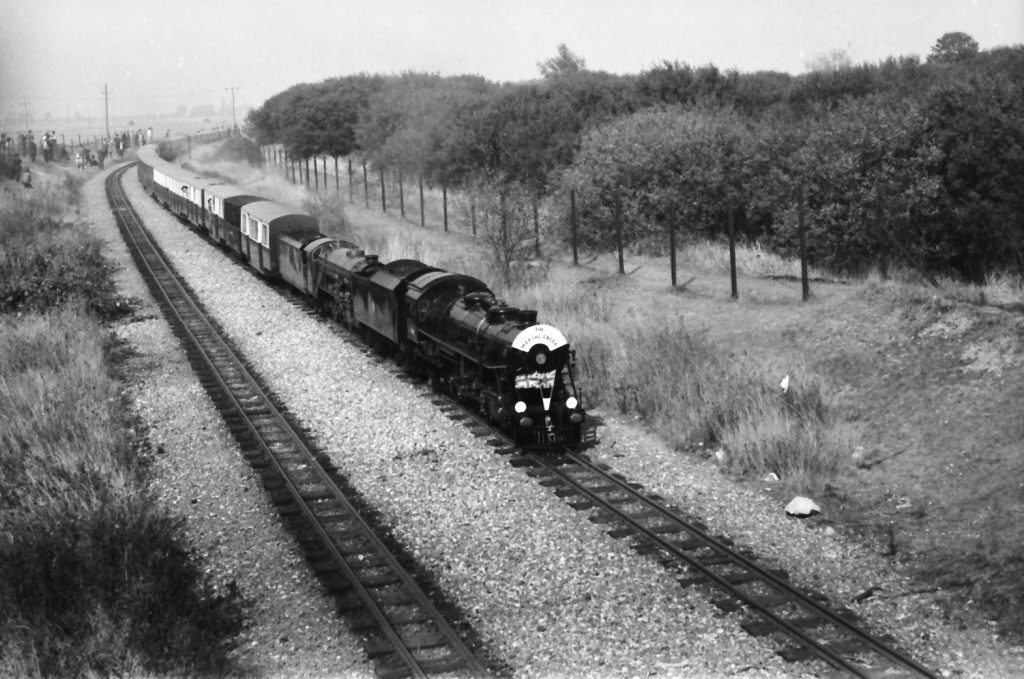
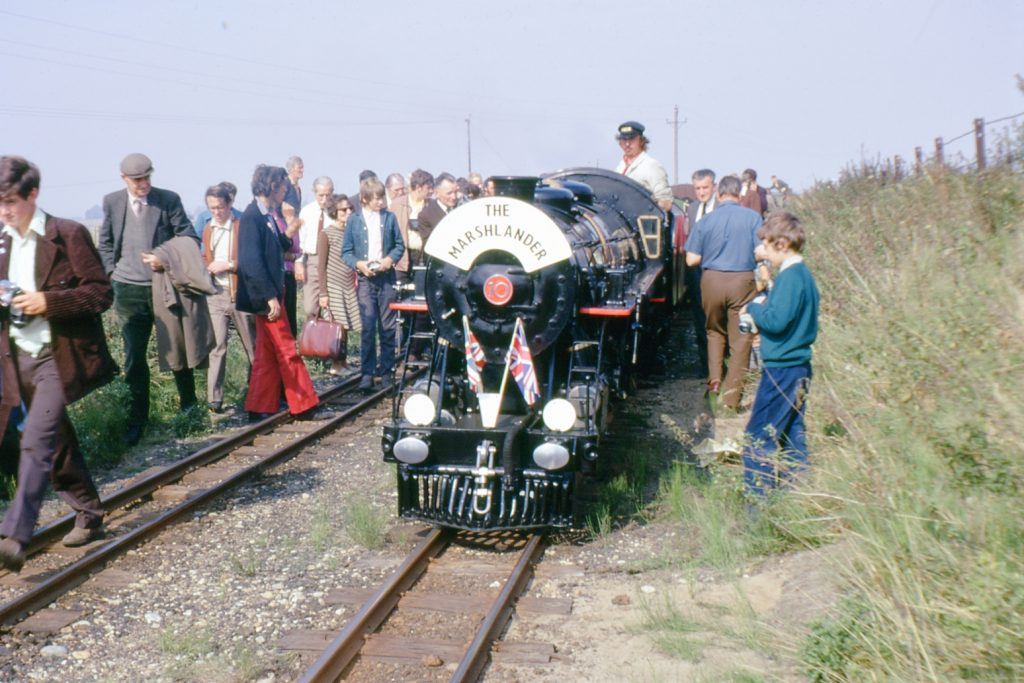
1978 saw something different with a Photo Special run in conjunction with the AGM on 13th May. No.7 Typhoon (Driver Eric Copping) ran from Hythe to Hythe, but this time stopping just about everywhere. Not just the stations, but also locations like Botolph’s Bridge, the Warren and Half Mile Curve. Typhoon sported the Coronation Limited headboard but, ironically for a Photo Special, we don’t seem to have any photos of the train in the archive!
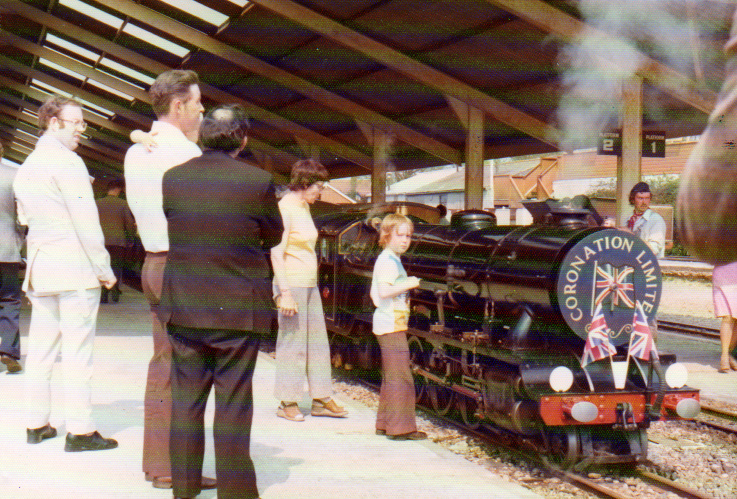
The 1979 AGM train just ran from Hythe to New Romney but was hauled by Red Gauntlet. Only two coaches were needed for around 20 passengers and the trip took 31 minutes. This is another train for which we have no photographic record.
The next non-stop round trip was the “Fifteen Inch Flyer” that ran in filthy weather on 25th April 1981. No.8 Hurricane (Driver Richard Batten) and No.7 Typhoon (Driver Eric Copping) hauled 30 fully loaded coaches. The round trip took 87½ minutes. Having driven Green Goddess on the first such run, George Barlow was able to enjoy this trip on the cushions of the bar car. A report and photos of this train are in Marshlander 55, but again, photos of this event have yet to get to the archive.
The 1981 AGM on 13th June saw No.4 The Bug hauling “Der Sumpflander” (The Marshlander in German). Driven by Tony Crowhurst and with a six-coach train, it ran non-stop from Hythe to New Romney. It was then scheduled to run non-stop to Dungeness, but an emergency stop between Lade and The Pilot scuppered that. A dog had escaped from the train and its owner followed it! A photo run-by was done at Dungeness before the train returned non-stop to New Romney and No.6 Samson (Driver Derek Walsh) took over to Hythe.
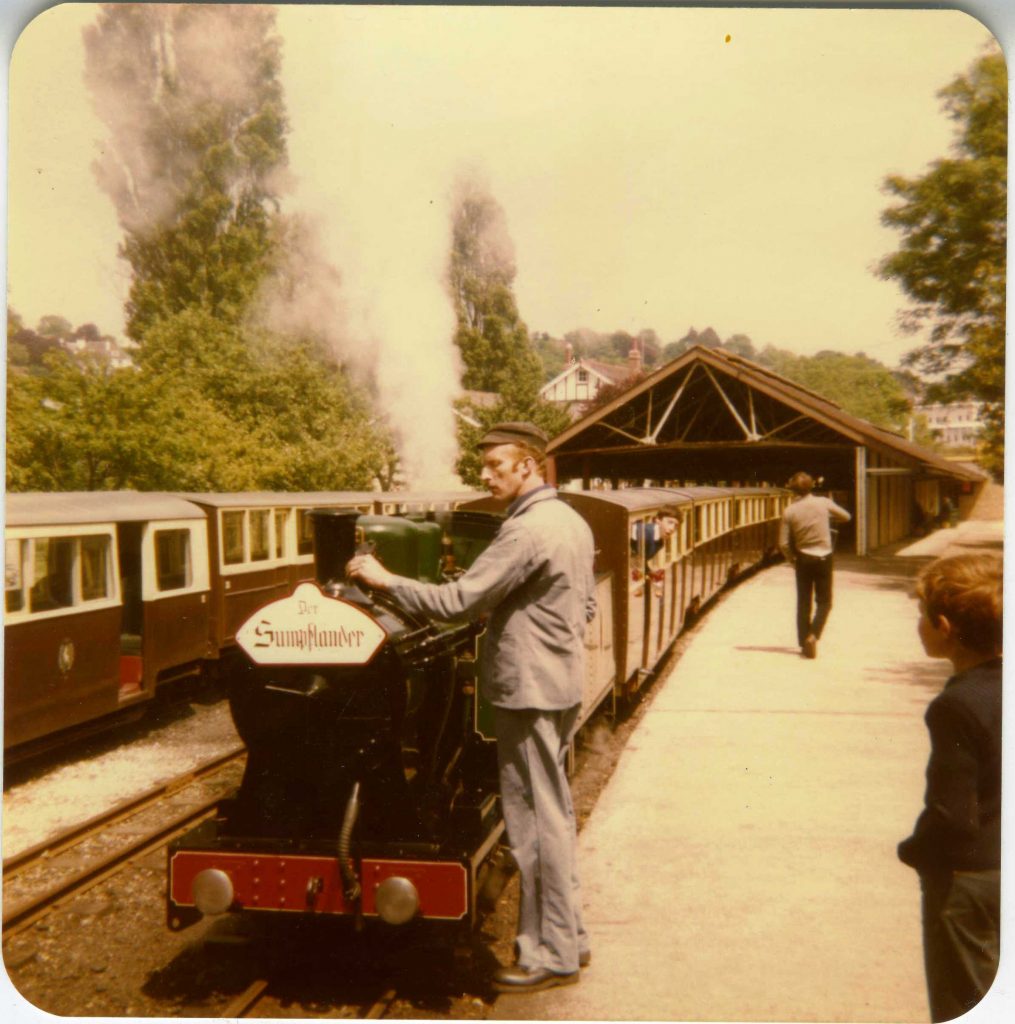
Derek Walsh featured again on 17th April 1982 when the Association chartered the Kentish Mountain Express. No.5 Hercules (Driver Derek Walsh) was now running with a small Greenly tender with only a water capacity of around 180 gallons so a non-stop run Hythe-New Romney via Dungeness with a maximum of 12 coaches was agreed. On arrival at New Romney there was still plenty of water in the tender. After a break for the driver and passengers, the train went on to Hythe, stopping only for a photo run-by at The Willop.
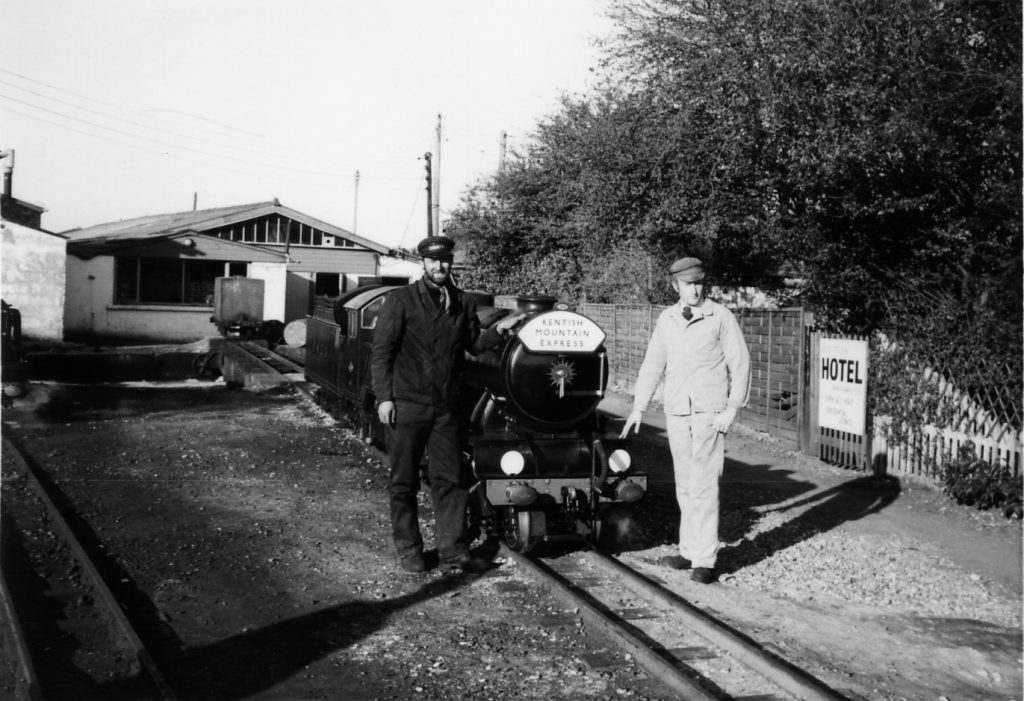
The final train to mention was yet another Hythe-to-Hythe non-stop run – the Romney Marathon Express which ran on 2nd October 1982. No.7 Typhoon was originally rostered to work the special but had failed a day or two earlier with a defective internal steam pipe. Driver Eric Copping was therefore at the controls of No.10 Doctor Syn with Derek Walsh as a footplate passenger. No doubt glad of the extra room in the cab compared to Typhoon. The train consisted of 13 “teaks” plus the bar car, 37 tons.
Eric Copping was well known to enjoy a fast run and logs of the journey show that he got the train up to 28 miles an hour at a number of places. In fact, the locomotive was not steaming well, and Eric was having difficulty keeping the boiler pressure up. Despite this, the complete round trip took 73 minutes and 22 seconds. Was this the fastest ever?
During this period there were of course other special trains run by the railway, including the first parallel run between Hythe and New Romney on 25th October 1980, but the Association played a large role in thinking up itineraries and marketing the specials to members and the general public alike.
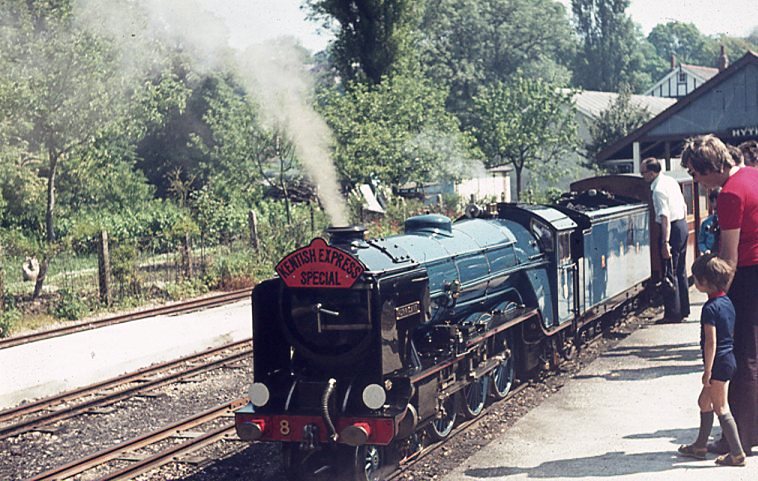
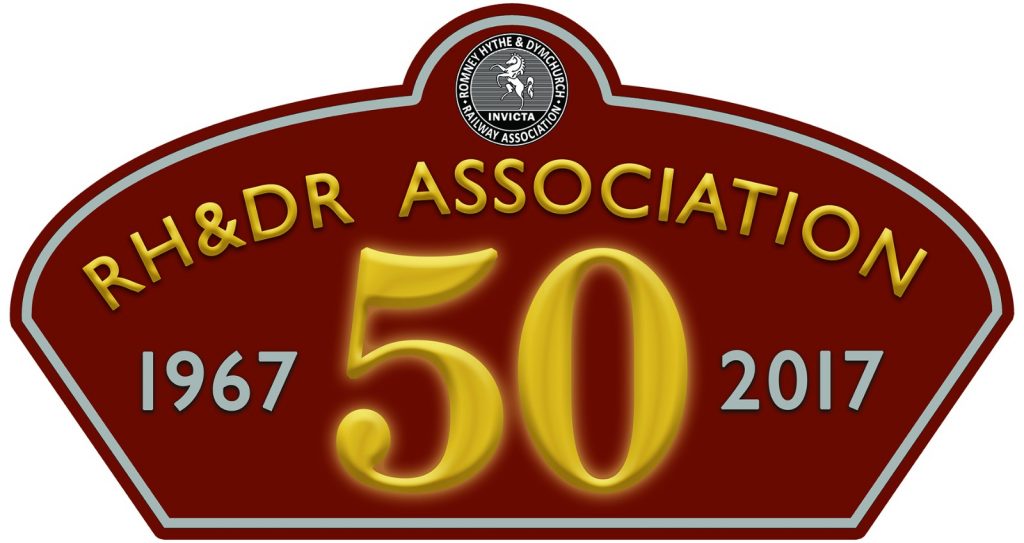
 Romney Hythe & Dymchurch Railway Supporters Association
Romney Hythe & Dymchurch Railway Supporters Association